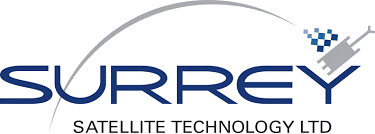Part 1 of 2 Parts
I have blogged in the past about the terrible situation with space junk orbiting the planet in low-Earth orbit. There are millions of pieces of space junk in orbit that vary in size from rocket stages to millimeter specks. Even a flake of paint hitting a satellite can cause damage. There have been various proposals for ways to deal with the problem. Some involve sending out a “garbage collector” satellite to either grab, vaporize or deorbit debris. The Russians are currently working on a powerful ground-based laser that could be used to vaporize space debris from the ground. Another approach would be to include devices in the satellites that we launch that would deorbit them when their useful life is over. The situation is only going to get worse as more and more satellites are launched.
Of course, NASA is concerned about the problem and has been experimenting with the RemoveDebris (RD) satellite to address it. This satellite was recently sent to the International Space Station (ISS) for testing. It is a cube about three feet on a side and it weights about two hundred and twenty pounds. It is the largest experimental satellite ever sent to the ISS.
The RD satellite was assembled by Surrey Satellite Technology Ltd. (SSTL) and the Surrey Space Center at the University of Surrey in the United Kingdom. It contains a variety of space debris removal experiments from multiple European aerospace companies. The consortium behind the RemoveDebris spacecraft includes Airbus Defense and Space, Airbus Safran Launchers, Innovative Solutions in Space (ISIS), CSEM, Inria, and Stellenbosch University.
The CEO of SSTL said, "SSTL's expertise in designing and building low cost, small satellite missions has been fundamental to the success of RemoveDEBRIS, a landmark technology demonstrator for active debris removal missions that will begin a new era of space junk clearance in Earth's orbit."
The Surrey Space Center website says that the spacecraft consists of the following: "The mission will comprise of a main satellite platform (~100kg) that once in orbit will deploy two CubeSats as artificial debris targets to demonstrate some of the technologies (net capture, harpoon capture, vision-based navigation, dragsail de-orbitation). The project is co-funded by the European Commission and the project partners, and is led by the Surrey Space Centre (SSC), University of Surrey, UK."
The RD satellite will deploy two cubesats to simulate two pieces of space junk. Cubesat as rated in units of four-inch cubes. For the first experiment, one of the test cubesats named DebrisSat 1 will inflate an onboard balloon so it can simulate a larger piece of space junk. The RD Satellite will deploy a net which will catch DebrisSat 1. The captured cubesat will be guided into the Earth’s atmosphere and then released from the net to descend and burn up. For the second experiment, the other cubesat named DebrisSat 2 will be used to test the RD satellite’s tracking and ranging lasers, its algorithms and it vision based navigation technology.
The third experiment will test the ability of an onboard harpoon to hit and hold a piece of space debris. There are legal reasons that prevent a test on a real satellite, so the RD satellite will extend an arm which has a target for the harpoon on the end of it. The harpoon will be fired on a tether at forty-five miles per hour at the target for an accuracy test.
Please read Part 2
